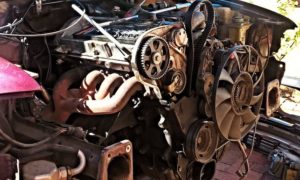A Comprehensive Guide to Purchasing a Reliable Used Car
Investing in a used car can be a smart decision, provided it’s a reliable choice. This guide offers valuable insights and practical tips for car owners navigating the used car market. By understanding the essential steps and considerations outlined here, you can confidently make a well-informed decision when purchasing a pre-owned vehicle.
Purchasing a Reliable Used Car
1. Set Your Budget
Before delving into the used car market, establish a comprehensive budget that encompasses all associated costs beyond the vehicle’s purchase price. Consider expenses such as taxes, registration fees, insurance, and potential maintenance or repairs.
Determining Affordability: Assess your financial situation and determine an affordable total budget. Experts often recommend allocating no more than 15-20% of your annual income for car-related expenses, including purchase price, taxes, and ongoing costs.
Consideration of Ongoing Expenses: Recognize that the initial purchase cost is just the beginning. Account for recurring expenses like insurance premiums, fuel costs, maintenance, and potential repairs based on the vehicle’s age and condition.
Pre-Approval for Financing: If planning to finance the purchase, secure pre-approval for a loan to understand your borrowing capacity and potential interest rates. This information helps in setting realistic budget constraints.
Flexibility in Budgeting: While setting a budget, maintain flexibility to accommodate unforeseen expenses. Used cars might require repairs or maintenance soon after purchase, so having a financial buffer is prudent.
A well-defined budget not only narrows down the search but also ensures a practical and sustainable purchase. Carefully considering all expenses associated with owning a used car aids in making a financially sound decision.
2. Research Vehicle Models
Thorough research on different vehicle models is crucial to finding a reliable used car that aligns with your preferences, lifestyle, and budget.
Reliability and Reviews: Begin by exploring car reliability ratings and reviews from reputable sources. Evaluate the vehicle’s historical performance, including common issues or recalls. Websites, forums, and consumer reports offer valuable insights into various models’ reliability and long-term ownership experiences.
Consider Specific Requirements: Identify your specific needs, such as space, fuel efficiency, safety features, or performance requirements. Compare different models based on these criteria to find the best fit for your lifestyle.
Budgetary Considerations: While assessing models, factor in maintenance costs, insurance premiums, and potential repairs associated with specific vehicles. Some models might have lower purchase prices but higher long-term maintenance expenses.
Test Drive and Evaluation: If possible, test drive multiple models you’re interested in. Assess their handling, comfort, visibility, and technology features. Pay attention to any peculiar noises or signs of wear during the test drive.
Future Resale Value: Consider the vehicle’s depreciation rate and future resale value. Certain models retain value better than others, which can be advantageous for future trade-ins or sales.
3. Vehicle History and Inspection
Assessing a vehicle’s history and conducting a meticulous inspection are critical steps in ensuring the reliability and condition of a used car.
Vehicle History Report: Obtain the vehicle identification number (VIN) and run a comprehensive vehicle history report using reliable services like Carfax or AutoCheck. This report provides valuable insights into the car’s past ownership, accident history, title status, service records, and potential recalls.
Certified Mechanic Inspection: Prior to finalizing the purchase, enlist a certified mechanic to perform a comprehensive inspection. A professional inspection covers the vehicle’s mechanical, structural, and safety components. Areas such as the engine, transmission, brakes, suspension, and frame integrity are thoroughly evaluated.
Evaluation Criteria: The inspection should assess the vehicle’s overall condition, any signs of previous damage or repairs, wear and tear, and the functionality of essential components like the steering, brakes, lights, and safety systems.
Red Flags and Negotiation: Review the inspection report thoroughly. Any identified issues can be used as negotiation points or, if critical, as reasons to reconsider the purchase. Ensure the seller addresses or rectifies significant concerns before finalizing the deal.
A meticulous vehicle history check and professional inspection provide valuable insights into a used car’s past and present condition, empowering car owners to make informed decisions and potentially avoid unforeseen issues down the road.
4. Test Drive and Evaluation
A comprehensive test drive is an essential step in assessing the overall condition and performance of a used car before making a purchase decision.
Schedule a Test Drive: Arrange a test drive with the seller or dealership. A test drive provides firsthand experience and allows evaluation of the vehicle’s handling, responsiveness, comfort, and any potential issues.
Performance Assessment: During the test drive, pay attention to the car’s acceleration, braking, steering response, and overall drivability. Test the vehicle under various conditions, including different speeds, road types, and traffic scenarios.
Interior and Features Inspection: Evaluate the interior condition, including the comfort, seating ergonomics, infotainment system functionality, and climate control. Ensure all features and controls are in proper working order.
Exterior Examination: Inspect the exterior for signs of wear, dents, or paint discrepancies. Check for uniform panel gaps, which could indicate previous damage or repairs.
Listen for Anomalies: Pay close attention to any unusual noises, vibrations, or warning lights during the test drive. Uncharacteristic sounds or sensations could signify underlying mechanical issues.
A comprehensive test drive and thorough evaluation enable car owners to assess the used car’s overall condition, ensuring it meets expectations and aligns with performance and comfort standards.
5. Negotiation and Documentation
Effective negotiation and meticulous handling of documentation are crucial aspects when finalizing the purchase of a used car.
Negotiation Strategies: Armed with comprehensive research and inspection findings, negotiate the price based on the vehicle’s condition, market value, and any identified issues. Be prepared to walk away if the terms don’t align with your expectations.
Clarify Purchase Details: Discuss any warranties, return policies, or additional services offered by the seller. Ensure all verbal agreements or promises made during negotiations are documented in writing before finalizing the deal.
Thorough Documentation: Review all paperwork meticulously before signing. Ensure the seller provides essential documents like the title, vehicle history report, maintenance records, and any warranty agreements. Verify the VIN on the paperwork matches the vehicle.
Transfer of Ownership: Complete all required paperwork for the transfer of ownership, including title transfer, registration, and sales contract. Understand the state-specific regulations and legal requirements for purchasing a used vehicle.
Final Inspection and Payment: Before completing the transaction, conduct a final inspection to ensure the vehicle matches the agreed-upon terms. Arrange payment through a secure method, such as certified checks or electronic transfers.
Navigating the negotiation process and handling documentation diligently ensures a transparent and smooth transaction when purchasing a used car, safeguarding both the buyer’s interests and the seller’s obligations.
Conclusion
Navigating the used car market requires meticulous planning and research. By following these steps and exercising due diligence, car owners can confidently purchase a reliable used car that meets their expectations, ensuring a satisfying and cost-effective ownership experience.




